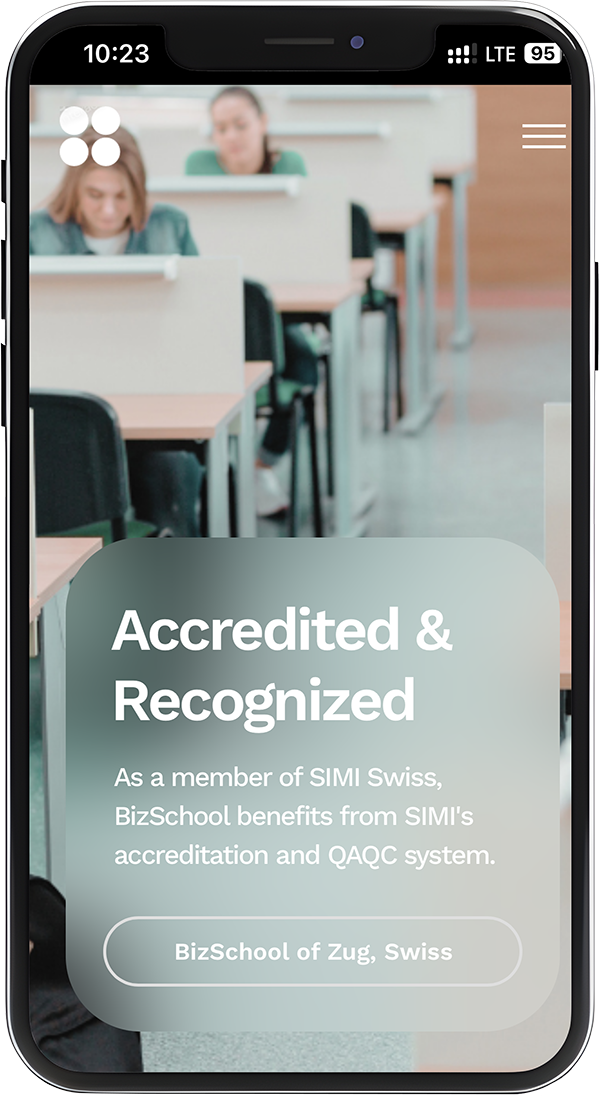SIMI Swiss Direct™
Learners study directly with SIMI Swiss – not through joint programs, franchises, or intermediaries, ensuring the program remains original and consistent in quality. The lectures are uniquely designed based on SIMI’s proprietary pedagogical model, closely aligned with the knowledge acquisition process of working professionals (Bloom).



Are you interested in trying it out?
Exclusive online training content of SIMI designed according to Bloom’s Taxonomy.
e-Learning Pedagogy

Tell me

Show me

Involve me

Test me
Exclusive e-Learning
pedagogy
1. Module Overview
What is it all about? Learners will often remember the first thing they see, so this has to be inviting, punchy and high - impact.
2. Learning Outcomes
What will I learn? What learners will be able to do after studying the lesson? This is very important in terms of letting learners know what they will achieve and should form the basis for reviewing each session to check learning and understanding.
3. Introduction
Does this set the scene for me? Rationale for the Section. This is used to set the scene in terms of what the specific section will contain and what it will lead to. It needs to entice the learner to want to study the module or its component parts.
4. Tell Me
What do I need to know? Bite-sized content that introduces theories and concepts. These sections are used to introduce key constructs, theories, and ideas with brief but pertinent explanations that learners can relate to and written in an appealing style that they can relate to. Where applicable differing theories should be included so that learners can compare and contrast theories/models and evaluate them in the context of the skills they exhibit/need to develop.
5. Show Me
Can I have an example? The use of practical/illustrative examples to underpin the concepts and theories presented. These are designed to show learners how the ideas presented are related to the real world and real-world examples. This could be in the form of visuals, case studies, or anecdotes. The key point is that whatever is used must kindle some form of emotion and realism. They must also be current and valid and appeal to an international audience.
6. Involve Me
How is this relevant to me? Application of the theories and concepts presented. These are designed to allow the learner to synthesize knowledge by getting them to do something that is relevant to them and that is directly applicable to their working role/environment. Some examples include reflective exercises, presenting them with a work-based scenario, and asking open-ended questions (e.g., how they go about performing a particular task, asking them how they would respond to a certain situation, case study analysis). This gives them the opportunity to challenge ideas.
7. Show Me More
Where can I find out more? Additional directed learning, so learners can find out more about the subject/subject areas.
8. Test me
What have I learnt? Self-assessment to check learning and understanding. This is used for students to check their understanding of each section. This could be in the form of word searches, games, missing words, quizzes, etc. Refer to the sample model for guidance.
9. Remind me
What have we covered? Summary of all the key points and issues raised. This is the last thing that they will see, so it needs to be structured in a way that aids retention.
10. Feedback
How can I measure my learning? Feedback relating to appropriate learning opportunities to reinforce and consolidate learning.


